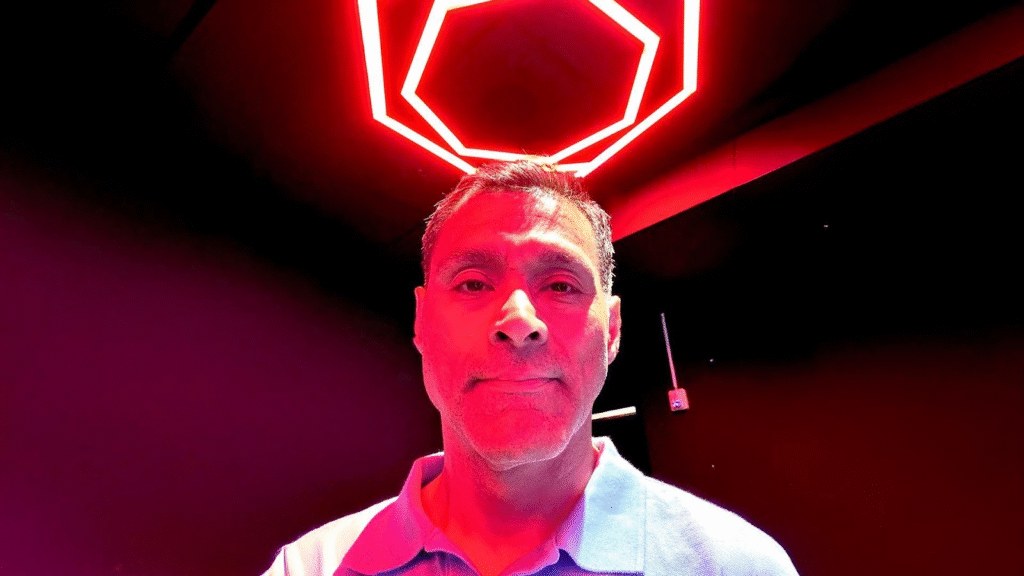Creating a quantum algorithm that compresses oceans of digital data without losing a single bit of accuracy is the holy grail for any technologist working in advanced communications or quantum cryptography. Such algorithms can unlock limitless possibilities for faster networks, reduced storage footprints, and entirely new modes of global connectivity. “An algorithm only becomes truly groundbreaking when it can transcend boundaries and be applied universally, not just within a narrow field,” says Anthony Ravenberg, the Sonic Boom KDP founder and self-taught inventor behind the world’s first fully lossless quantum data compression algorithm. His decades of focused research culminated in the Kinetic Data Primer (KDP), a patented algorithm that compresses any modality of digital data to extraordinary ratios with perfect accuracy.
From his early childhood experiments with walkie-talkies to the moment he first encountered the Motorola StarTAC, one of the first mobile phones to fit into a pocket, Ravenberg was captivated by the possibilities of wireless communication and data security. “The linchpin of all wireless communication is data compression,” he says, with the same enthusiasm that first drew him to the field.
From that early fascination grew into the system that the U.S. Patent and Trademark Office would ultimately recognize as a universal algorithmic method capable of compressing any form of digital data to extraordinary ratios while preserving perfect source integrity. The implications of KDP are sweeping: from bridging digital divides in remote regions to delivering 6G+ speeds over legacy 3G infrastructure without reliance on wireless spectrum or high-speed bandwidth. And with such possibilities, the next question becomes how an innovation of this scale is defined, protected, and distinguished from everything that came before it.
What Makes an Algorithm Patent-Worthy
Ravenberg believes the distinction between a standard algorithm and a patent-worthy one lies in its ability to transcend boundaries and revolutionize industries. “The algorithms that truly stand apart are the ones that prove adaptable across all platforms and protocols, becoming indispensable well beyond their original niche application,” Ravenberg says.
Brilliant innovation alone is not enough. Securing a patent on a mathematical algorithm requires threading an incredibly narrow path. “You cannot patent math itself. You have to focus the patent’s entire cathexis upon a very specific mathematical process solely as it applies to the intended software’s utility,” Ravenberg explains. “One of the most daunting things that any entrepreneur who endeavors to file and win a patent faces is overcoming all known prior art within a given field of invention.”
When Ravenberg filed for KDP, he had to painstakingly defend the application against more than 40 other existing technologies that were all incredibly sophisticated in their own architecture. That process meant narrowing the patent’s scope through countless rejections and revisions, identifying what made his system unique, and defining its real-world utility by envisioning the future of technology years ahead.
“It’s almost like going for a bank loan with an incomplete application,” he reflects. “You feel the anxiety of being denied every day. But once you see what’s already been done, you can avoid infringing upon a prior art’s space and deftly thread the needle with enough effort.”
Protecting Intellectual Property
For innovators, Ravenberg emphasizes that intellectual property protection does not end with patents. “The first and easiest measure of IP protection to create a copyright upon a unique body of work,” he says. Anything from a manuscript to a single line of code can be copyrighted. “If you have an original manuscript that you worry might get adopted into someone else’s screenplay, file a copyright on it immediately and then put it out in the public domain. That’s basic fair warning that legally indicates the unique prose is indeed copyrighted material.” Furthermore, simply placing information online does not guarantee uniqueness. “You have to also have a unique usage of certain elements of that copyright,” Ravenberg adds, highlighting the importance of a multi-layered approach to safeguarding creative ideas and proprietary IP.
AI, Regulation, and the Next Wave of Innovation
Looking far ahead, Ravenberg sees a coming shift in how artificial intelligence and intellectual property intersect. “All AI systems right now are based on size-variant language models,” he says, noting that parsing training data is the lifeblood of these sophisticated systems. The insatiable demand for ever-richer data sources has sparked fierce regulatory debates on the usage of copyrighted material. “Right now, training an AI system on copyrighted material does not in itself constitute technical copyright infringement, so long as the system is not reproducing the protected works verbatim or disseminating such material without basic good faith custodial management,” Ravenberg says, referencing ongoing U.S. court rulings such as Thomson Reuters v. Ross Intelligence and related debates highlighted by the Supreme Court’s stance on fair use explains.
The landmark decision could redefine how companies build and train AI models on copyrighted material in the public domain, but it also opens up new risks in its usage. “A wave of change is quickly coming to AI. You’re going to see people’s personal information in some way get trained on AI and there’s going to be a manner of class action lawsuit happen whereby people are going to claim privacy infringement even without their personal data being unveiled or actually put at risk. Just the mere concept of using someone’s personal data without implied consent to train AI will be enough to create public hysteria, however unfounded.” These foreseeable developments and future considerations reinforce Ravenberg’s broader view that true progress in data science and communication evolution must always be paired with leadership responsibility.
Redefining Connectivity
From a boyhood fascination with walkie-talkies to pioneering the world’s first quantum compression algorithm, Ravenberg’s journey is a true testament to relentless curiosity, self-education, and the pursuit of ideas that redefine how humanity connects. “I’ve learned that creating success in algorithms is not just about solving an impossible mathematical puzzle, but about creating something universal, adaptable, and essential to all humanity.”
Readers can connect with Anthony Ravenberg through his LinkedIn or visit his website for more insights.













